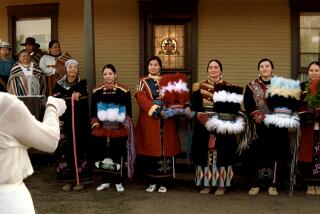Osage Orange Growing Scarce in Illinois
- Share via
KANKAKEE, Ill. — Thorny hedges of Osage orange once surrounded nearly every farm field in Illinois like palace guards, defying penetration and protecting the soil within their perimeters.
The hedges were home to millions of pheasant chicks and crows, shelters for rabbits and other animals. But those were other years.
Now, the rural landscape is changing, and the hedges’ future is uncertain.
The Osage orange, also known as the horse apple or bow wood, is not native to Illinois, the Department of Conservation’s Division of Forest Resources says. It’s a Southerner, originally found in only 57 counties of East Texas and in tiny corners of Arkansas and Oklahoma.
But the hedge has been a tree of destiny.
Substitute for Metals
The invention of barbed wire in De Kalb in the late 1830s revolutionized ownership and settlement patterns throughout the country, and the demand for durable fence posts grew.
Because metals were too expensive, the Osage orange was adopted as a substitute. Trees and “hedge apples,” their seed-bearing fruit, were brought North and planted in fertile Illinois soil. Soon, “living fences” began to circle farm fields.
The hedges can still be seen in all but nine of Illinois’ 102 counties. Their great fame derives from their continuing contribution to wildlife and agriculture.
In the early part of this century, the hedge told farmers when to plant. Old-timers watched for the emerging leaves to grow to about the size of squirrels’ ears, which usually happened about May 10.
Bill Ebert, district conservationist with the U.S. Soil and Water Conservation Service in Kankakee, said an unplanned benefit of the hedges was soil conservation.
‘Got to Help’
“I believe that any standing row of any kind of trees has got to help--not only to slow down the wind velocity and its corrosive forces, but to slow the moisture loss in the fields as well,” he said.
More to Read
Sign up for Essential California
The most important California stories and recommendations in your inbox every morning.
You may occasionally receive promotional content from the Los Angeles Times.













